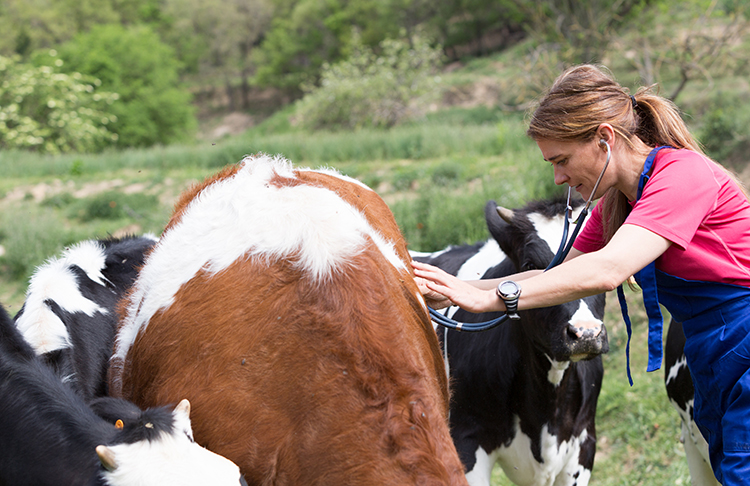
Of the more than 118,000 veterinarians in the U.S., the American Veterinary Medical Association estimated in 2020 that just 5.3% are in food animal practice. That’s compared to 69.7% in companion animal work and 3.2% in mixed practice.
Food animal medicine’s low share of the industry is not exactly groundbreaking news, particularly in rural counties where openings for those positions may stay unfilled for years. What has changed is that a recent report from the Farm Journal Foundation says the number of large animal vets has reached “such a critically low point that urgent action is required.”
Over the past 20 years, only 3% to 4% of new veterinary graduates have gone into large animal production, the report says. While that number has stayed relatively steady, the total number of food animal veterinarians is likely to decline in coming years as more current vets retire with not enough graduates to replace them.
A lack of qualified large animal veterinarians is a concern for animal health, food safety, and the vitality of rural areas, wrote Cornell University’s Clinton Neill in the report. Without access to veterinary care, 3.7 million livestock jobs are at stake. Policy changes, such as the most recent update to the Veterinary Feed Directive and this year’s implementation of restrictions on over-the-counter treatments, means a veterinary relationship is even more necessary for farmers to be able to do their jobs. But it also creates more costs and time for vets, who may be balancing the needs of clients hours away from each other. At the same time, the rise in demand for pets and better healthcare for those animals has made companion animal care more attractive for many veterinary graduates.
When considering small or large animal care, veterinarians must also typically consider the urban or rural location. The report cited that the most commonly reported reasons for vet shortages in rural areas include the high education debt, challenges of rural life, a higher on-call demand, a lack of mentorship ability, and difficulty accessing resources to establish a practice. Any and all of these factors may contribute to burnout, stress, or leaving the field entirely.
What can be done?
The consolidation that’s happened in animal agriculture over the last few decades has not made it easier for veterinarians to serve clients. At the same time, we must be able to ensure that those farms that need those relationships have access to a qualified individual. The report advocated for future policy to address three areas:
- Strengthen debt repayment programs and allow more participation.
- Expand programs that offer business support, including loan help, to practices for rural communities.
- Develop programs to find and support students committed to working in rural areas.
To read the full report detailing food animal and rural veterinarian challenges, click here.








